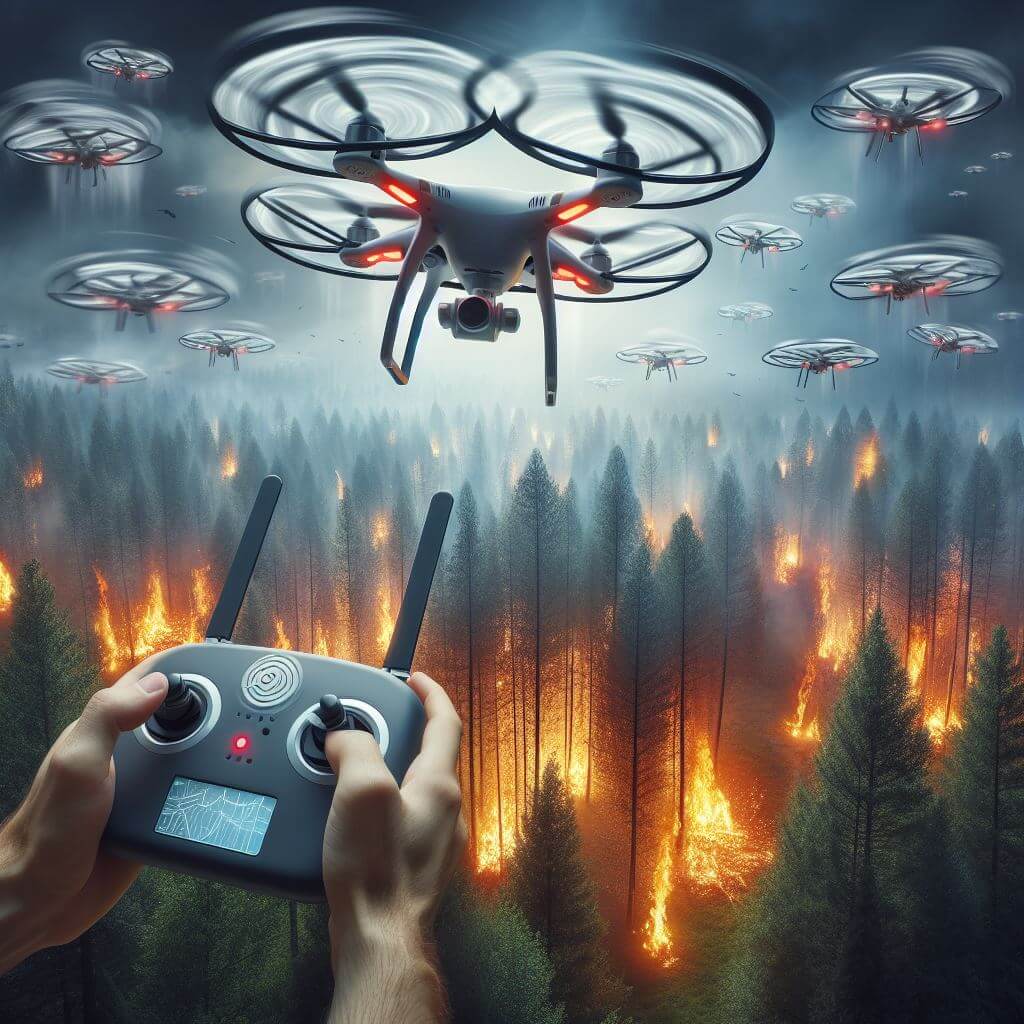Scientists at the Indian Institute of Science are investigating the use of drone clusters to combat environmental emergencies, such as the rampant forest fires that are increasing worldwide due to the effects of climate change.
 “Drone swarms could be a vital solution,” recalls Suresh Sundaram, professor of aerospace engineering at the Institute. While the use of drones in disaster scenarios is not new, Sundarama’s group offers a cutting-edge approach in their research presented in IEEE Transactions on Systems, Man, and Cybernetics: Systems, advocating the orchestration of multiple groups of drones for effective forest fire control. “By the time a fire is detected and reported, it has started to spread, making a single drone intervention ineffective,” explains Sundaram. “That’s why a communicating swarm is important.”
“Drone swarms could be a vital solution,” recalls Suresh Sundaram, professor of aerospace engineering at the Institute. While the use of drones in disaster scenarios is not new, Sundarama’s group offers a cutting-edge approach in their research presented in IEEE Transactions on Systems, Man, and Cybernetics: Systems, advocating the orchestration of multiple groups of drones for effective forest fire control. “By the time a fire is detected and reported, it has started to spread, making a single drone intervention ineffective,” explains Sundaram. “That’s why a communicating swarm is important.”
The innovation involves the creation of a unique algorithm that allows drones to interact and make decisions autonomously. Imagine a scenario where after a fire is alerted, swarms equipped with image sensors, thermal and infrared sensors, and temperature sensors are dispatched to pinpoint the fires. Fire detection triggers the nearest drone to act as the swarm’s focal point, rallying others to gather at that location. Each drone is designed to independently assess the scale and trajectory of the fire, and determine the optimal number of drones needed for extinguishing.
“The drones make these tactical decisions on their own, identifying areas of fire that are spreading the fastest and deploying the drones accordingly, while others look for additional fire locations,” adds Sundaram. Central to the drone control strategy is a search algorithm inspired by the hunting patterns of the marine organism Oxyrrhis marina, as detailed by Josie John, PhD student and lead author of the paper. This algorithm allows drones to adjust search parameters based on proximity to heat sources, mimicking the hunting technique of a predator.
The use of drones offers decentralized, data-driven decision-making to efficiently allocate resources, ensuring that only the right number of drones serve each segment of the fire. The team experimentally tested elements of this approach, including artificial intelligence-based thermal imaging for fire detection and precise fire extinguisher deployment methods. Comprehensive field testing of full-scale search and suppression capabilities is expected. Plans include integrating these aerial swarms with unmanned ground vehicles for logistical support and refueling.
These drone teams can also prove invaluable in other disaster scenarios, such as floods and earthquakes, helping to locate victims as well as delivering essential supplies and maintaining communications.
